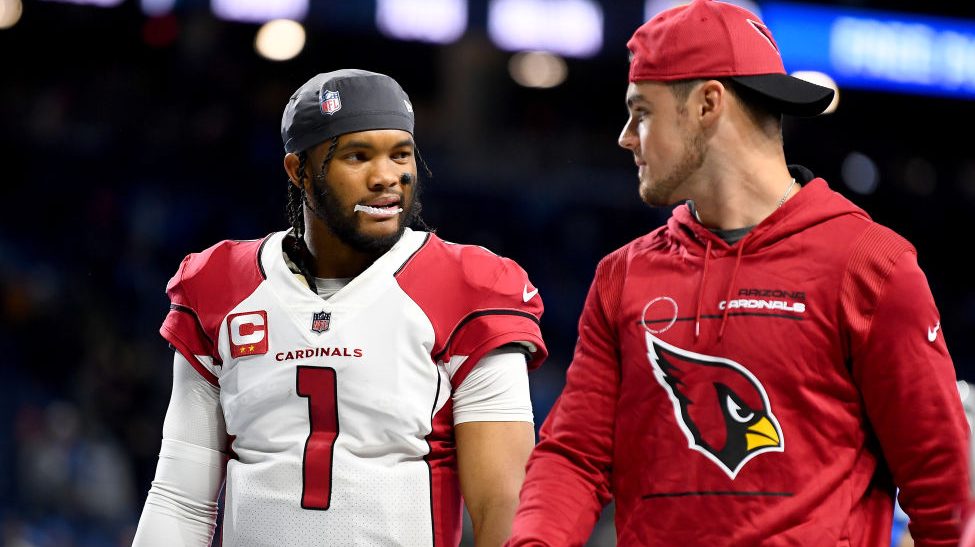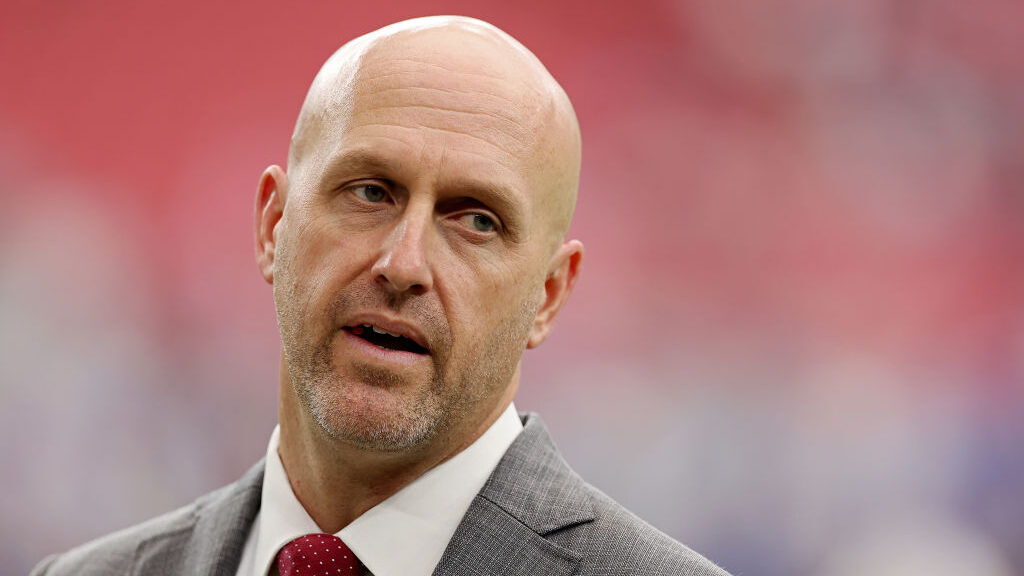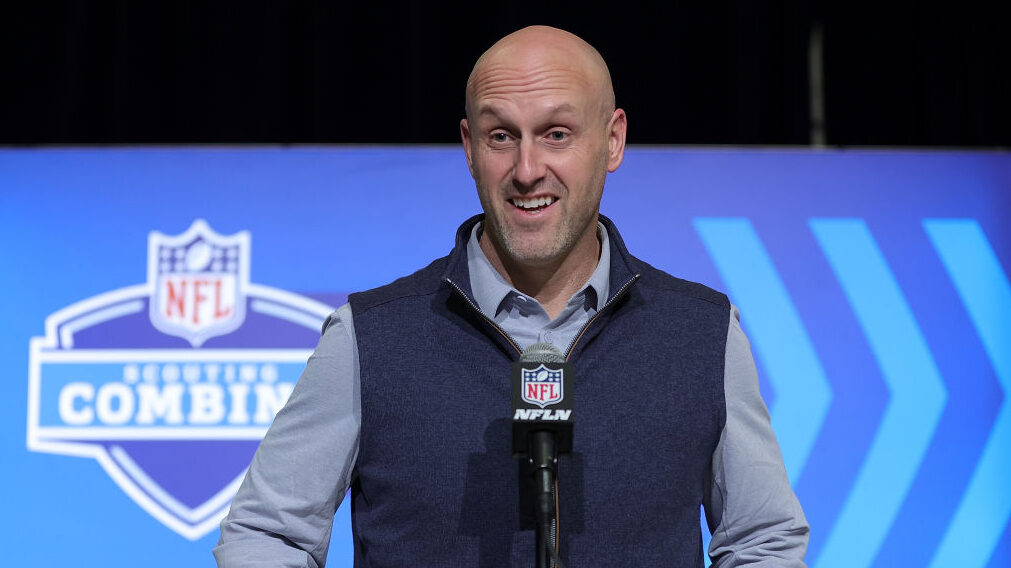Was loss of DeAndre Hopkins oversimplifying Cardinals’ 2021 stumble?
Jun 16, 2022, 9:24 AM | Updated: 9:25 am

DeAndre Hopkins #10 and Kyler Murray #1 of the Arizona Cardinals prepare for the game against the Philadelphia Eagles at State Farm Stadium on December 20, 2020 in Glendale, Arizona. (Photo by Norm Hall/Getty Images)
(Photo by Norm Hall/Getty Images)
The head coach of the Arizona Cardinals has explained his team’s fall off the cliff in 2021 by pointing to the injury to receiver DeAndre Hopkins.
Now that we’ve avoided that pun: Kliff Kingsbury might be oversimplifying things and failing to peek at what Arizona’s defense did after the Cardinals began last season 7-1 only to finish 11-6, but The Athletic’s Nate Tice and Robert Mays might agree with him.
Tice went stat-diving with a written piece for The Athletic to determine how much Murray missed Hopkins, while he and Mays watched the tape to see if the expected whys matched up.
They did.
“When I went back to watch, I wanted it to be more than, ‘Oh, it’s just Kyler making plays or it’s more than Hopkins making stuff on the outside,'” Mays said on the duo’s The Athletic Football Show.
“I want it to be more complicated than that, and it’s really just not when you boil it down. It’s in these moments where they’re unstable environments, unstable situations, where they’re really, really good over the first half of the year.”
Tice saw the same thing. The Cardinals’ offense was predicated on Murray hunting Hopkins and even A.J. Green in one-on-one scenarios, and because the quarterback has excelled throwing the deep ball and had two top-15 receivers by expected points added (EPA) in go routes or posts to the outside, it worked when the receivers were healthy.
But everything went south when ankle and knee issues plagued Hopkins after the hot start. Here’s how Tice boiled the stats down in his written breakdown of Murray’s and the Cardinals’ demise.
To put the drop in EPA per dropback into perspective: Murray went from performing like (NFL MVP) Aaron Rodgers in 10 games with Hopkins to playing like (Houston Texans rookie) Davis Mills in the four regular season games without him.
There were several factors that Tice and Mays discussed regarding the falloff in the back half of 2021.
— Murray struggled when the one-on-one matchup wasn’t open, which happened more often as Antoine Wesley stepped in with Hopkins out. With the Cardinals too often going with a three-man route tree opposite of that one-on-one situation, Murray struggled, especially against man defenses.
“Kyler is not very comfortable attacking that (three-man opposite),” Tice said. “If it’s zone, he is. But if it’s man coverage, he really struggled against that.
“He had the second-fewest attempts over the middle against man coverage since 2020. He’s not a guy who’s going to attack over the middle of the field … that’s where the height comes into play.”
— Opponents began realizing that Murray, who improved dramatically against blitzes and zone coverage, struggled in the pocket, especially when seven players dropped into coverage.
— The Kingsbury-led offense was too static even with Hopkins, keeping him almost exclusively on the left side of the field. Arizona pulled away from play-action when Hopkins got hurt and didn’t throw enough wrinkles into plays. When Arizona did present wrinkles, it usually ended well.
“It’s just little tiny things,” Mays said. “When you’re playing with these things in small ways, you can get those sort of plays. They just don’t do that very often. So often they’re lined up in these static ways, and I think that’s what’s really frustrating is that when they do put little spins on it, it feels like they do get really good results. They just don’t do it often enough.”
So how do the Cardinals change things in 2022, especially with Hopkins out the first six games due to a PED suspension?
Tice said that the addition of Hollywood Brown makes sense if the receiver replaces Christian Kirk in the slot, but there are reasons to wonder how good Brown would be replacing Hopkins as the X receiver. His skillset and much smaller size won’t allow him to win the 50-50 balls Murray so-often connected with Hopkins and even Green.
But the Cardinals can do more to help Murray by utilizing the efficient run game or getting the quarterback moving the pocket on sprintout passing plays, which would cut out half the field and give the quarterback mental breaks.
Maybe the most controllable thing — if the offensive scheming doesn’t change much — is focusing on Murray’s self-improvement.
In 2020, Murray ranked 33rd in the NFL in EPA per dropbacks against five or more pass rushers. That jumped to fourth last year.
In 2020, the quarterback ranked 36th in EPA against zone coverage. Murray improved that to fourth last year.
If Murray learns a bit more patience in the pocket to dice up man defenses, and the offense gets a little more balance and away from its static ways, perhaps the Cardinals quarterback can take another step forward.










